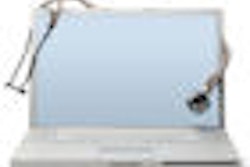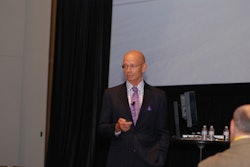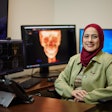
You can do your taxes, apply to school, and even buy your groceries via computer. One of these days, paper seems sure to follow clay tablets as an outmoded means of record keeping. So why do dentists still track their patients on paper?
The answer, according to a recent study published in the July/August issue of the Journal of the American Medical Informatics Association, is that computerized record keeping systems for dentists are incomplete and difficult to use.
"Transporting a dental practice from paper to computer is not a simple process," co-author, Titus Schleyer, DMD, PhD, told DrBicuspid. "Everyone can write progress notes on paper...but not everyone can use a computer program."
Resistance to tracking dental patients digitally is particularly surprising, since most dentists in the United States use computers for billing and appointments.
Well-designed medical records software should appeal to dentists for all the same reasons that superior accounting programs do. Paper records are bulky; difficult to share or search; awkward to backup; vulnerable to water, fire and mildew; and do not follow a uniform format
Yet according to the study, as of 2000, while 85.1 percent of all dentists in the United States use computers in their office, only 1.8 percent maintain complete computer-based patient records (CPRs).
So what's stopping dentists from going paperless?
The study found that, in fact, CPRs programs aren't all that well designed--they don’t capture all the information that a dentist might want to keep on a patient. These programs also are difficult to navigate. Worse, says Dr. Schleyer, when you switch from one screen to the next to review patient information, you must remember what you saw on the previous screen. Also, data fields that are commonly grouped in paper-based records aren't in some CPRs programs or are completely absent.
The researchers evaluated 10 existing paper record formats--four from practicing dentists, two from dental schools, and four from commercial vendors, and also consulted three textbooks that cover dental records.
They extracted and categorized all data fields from these sources and created a Baseline Dental Record (BDR). The authors eliminated fields that applied to specific populations (such as students or faculty), and those that duplicated the format or content of other fields.
The authors don't consider the BDR to be the gold standard for dental record keeping. "It is simply a good place to start for improving existing CPRs," said co-author Heiko Spallek, DMD, PhD, who, like Schleyer, is on faculty at the University of Pittsburgh Center for Dental Informatics.
The information content of the BDR was then tested against four major CPR programs -- Dentrix V. 10.0.36.0, EagleSoft V. 10.08 and SoftDent V. 10.0.2.94 and PracticeWorks V. 5.0.2.034 -- which collectively have 80 percent of the market share. The study focused only on clinical data fields and did not consider administrative fields such as billing and scheduling. It compared single data fields, as well as categories of data fields.
The BDR had 20 main categories and 363 data fields. On average, the CPRs programs evaluated can only record data in 11 to 16 of the BDR's categories and only 174 data fields. Three categories completely absent in all the reviewed CPRs programs were chief complaint, systemic diagnosis, and problem list.
The CPRs programs were also limited in their ability to chart hard tissue and periodontal findings. Collectively, the four CPRs applications could chart 31 percent to 88 percent of the hard tissue conditions listed in the BDR. Of the 28 conditions listed in the BDR's periodontal section, only six could be charted in all systems. Five could not be charted at all.
The CPRs vendors reviewed the results of the study and their comments are included in the study. One vendor noted that any of the clinical categories or fields that were missing could easily be entered as text in progress notes.
But the authors don't consider this an adequate alternative. "For example," they wrote, "although the numerical reading of a caries test for a single tooth can be recorded in the progress notes, a much better place would be the hard tissue chart, where it can be directly associated with the tooth and related data." Entering information in text fields reduces efficiency and effectiveness.
Kodak complains that the versions of PracticeWorks and SoftDent used in the study were released in 2003, are now out of date, and don't "accurately reflect the capabilities" of the company's offerings. "In the four years since then, we have released several major updates for both products that have both added functionality and expanded clinical data," said Steve Mallot, Director, Dental Development, KODAK Dental Systems in an email to DrBicuspid
Another vendor argued that its program could be customized to accommodate charting. All the tested CPRs could be customized to some degree but were all tested in default mode. "In the medical community customizing creates all kinds of hassles," Dr. Spallek told DrBicuspid. Besides, added Spallek, dentists pay a lot of money for these specialized programs. Why should they have to spend the extra time and/or money customizing them?
The BDR is currently a working project in the ADA's Standards Committee on Dental Informatics (SCDI).The ADA will use the results from the BDR study to create a more complete model. When this phase will be complete--and how CPRs vendors will respond--is unknown.



















